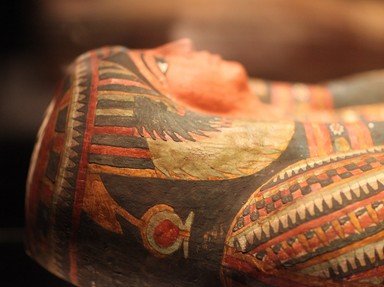Quiz Answer Key and Fun Facts
1. The mummy of King Tutankhamen was severely damaged in 1925 when it was studied by Howard Carter and his team of archaeologists. What, according to Carter's notes, caused the damage to the mummy?
2. What was found to be missing from the mummy of King Tutankhamen during the 1968 examination, which was not noted during the initial investigation by Howard Carter?
3. In 1925, when Howard Carter studied King Tutankhamen's mummy, what "evidence" led him to make the assumption that the boy king may have been murdered?
4. After studying the mummy of King Tutankamen in 1925, what did Howard Carter do with the mummy?
5. Modern scientists have concluded that King Tutankamen suffered from which of the following impairments?
6. A CT scan in 2005 enabled scientists to finally determine King Tutankamen's age at the time of his death. How old was he?
7. What family trait is apparent when studying King Tutankhamen's mummy?
8. DNA study revealed that King Tutankhamen's parents were brother and sister. Who was his father?
9. Modern scientific testing has confirmed that King Tutankamen had contracted which disease more than once during his lifetime?
10. Modern technology has been helpful in determining King Tutankhamen's exact cause of death.
Source: Author
ponycargirl
This quiz was reviewed by FunTrivia editor
bloomsby before going online.
Any errors found in FunTrivia content are routinely corrected through our feedback system.

